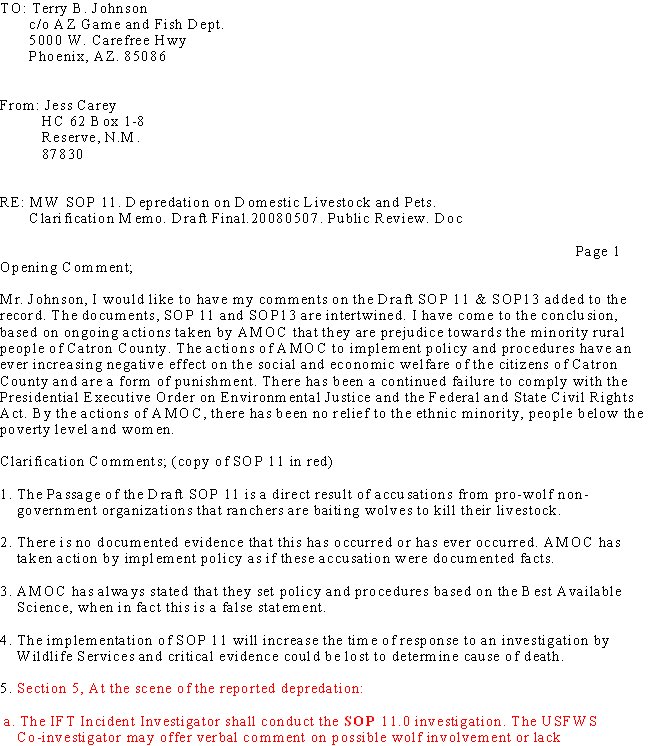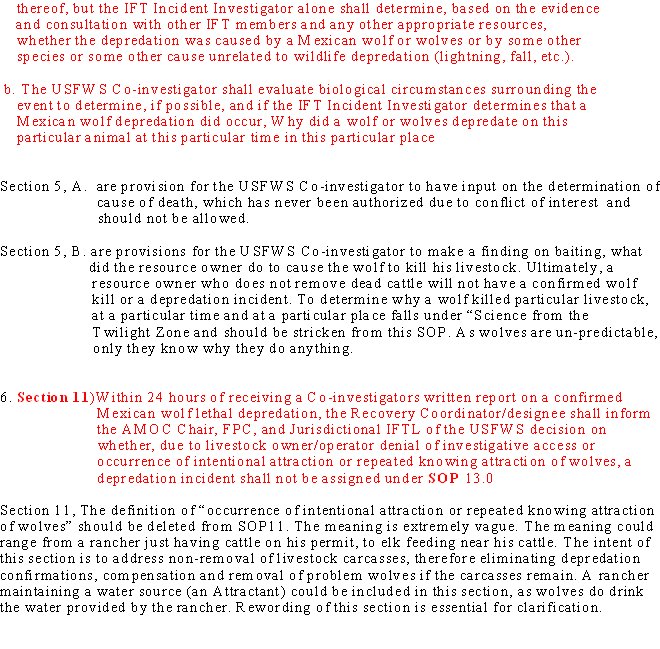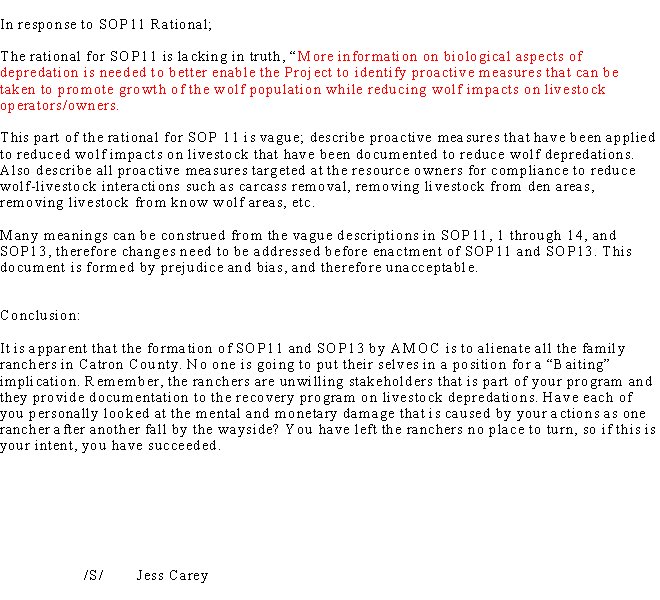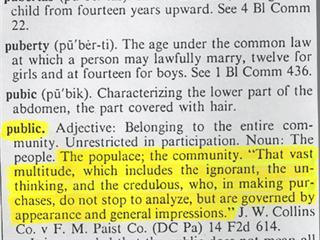"...government reports stated the decline of the desert tortoise was due to raven predation? They stated, "Raven predation will be to the extirpation [total extermination] of the tortoise population." The Bureau of Land Management (BLM) decided to kill 1500 ravens. An environmental group immediately sued the BLM. The BLM settled out of court and agreed to kill only 56 ravens providing it could be shown that the ravens killed were "habitually preying on tortoises."
Mexican Wolf Canis lupus baileyi is listed as an endangered species
http://www.defenders.org/wildlife_and_habitat/wildlife/mexican_wolf.php
Some things to consider by: T. R. Mader, Reseach Director
Abundant Wildlife Society of North America
The Endangered Species Act (ESA) has been used to:
1) Lock up vast areas of land from commodity use, i.e. the northern spotted owl used to shut down timber harvest in the Pacific Northwest.
2) Deprive an individual of their constitutional right of protection of private property, i.e. threat of $100,000 fine and mandatory prison sentence for killing an endangered wolf killing ones' livestock.
3) Deprive one of their property without just compensation, i.e. restriction on use and/or acquisition of land as critical habitat for endangered species.
The following changes, in order to bring balance and to put the human factor back into the ESA, are necessary:
1. Use only a biological and numerical definition of endangered species.
Biological Definition: Only pure species can be listed. No listing based solely upon sub-species, distinct populations or hybridization.
Problem Example: In 1944, Stanley Young and Edward Goldman listed 24 sub-species of the gray wolf. Today biologists feel there are no more than 5 sub-species of the gray wolf. Even these 5 sub-species should be viewed with caution as the biologists cannot tell them apart. The same can be said of the northern spotted owl and California spotted owl.
Numerical Definition: Only those species actually threatened with extinction (very few animals) can be listed.
Problem Example: The gray wolf population of North America numbers between 40,000 and 60,000 wolves. Due to national boundaries and "distinct populations" listings, wolves in Alaska and Canada are not considered in wolf population counts. Thus, the wolf, while in no danger of extinction, is "endangered" throughout the continental U.S., with the exception of Minnesota where it is listed as threatened. The same problem exists with bald eagles and grizzly bears (note: there are over 40,000 grizzlies in North America).
2. The socio-economic impacts of a listing must be considered. The current law makes no such consideration.
Problem Example: Land values in an area of Texas fell an estimated $300 million dollars due to an ESA listing of a songbird - the golden-cheeked warbler.
Also, the impacts of spotted owl listing on the timber industry in the Pacific Northwest. The Wall Street Journal reported a 25% cost increase in wood products which was directly related to the listing of the spotted owl. Thus, the nation, not just loggers, are impacted by the ESA listing of the spotted owl.
3. There must be just compensation on any taking of private property. The constitutional rights of citizens must be protected.
4. Individuals must have the right to protect their livelihoods and control endangered species threatening their livelihoods.
Problem Example: Endangered wolves, grizzly bears or eagles killing livestock cannot be killed by the owner of the livestock. A federal judge has ruled that a person does not have the constitutional right to protect their property from an endangered species. In 1990, over 7,500 sheep and lambs were killed by eagles in the states of Wyoming, Montana and Colorado alone.
5. The ESA must recognize that extinction is a normal part of the natural evolutionary process. The fossil record makes this abundantly clear. Failure to recognize this phenomena will result in wasting expertise and money on recovery programs doomed to failure by this natural process while people lose their jobs and go hungry.
6. Time and Expenditure limits must be placed on studies and recovery plans. The American taxpayer is entitled to fiscal responsibility of government agencies directed to saving endangered species.
Problem Example: In 1990, figures released on the Bosque Del Apache Wildlife Refuge in New Mexico revealed that the whooping crane recovery had more than one million ($1,000,000) in each bird.
7. Accountability must be required of government agencies charged with saving endangered species. This is in two areas: 1) Standards must be set for best scientific and commercial data. 2) Agency personnel must work with the average citizen and not against them.
http://www.aws.vcn.com/flawed.html
Posts and Comments from Readers
Please include yourself in the discussion. Post a comment.
Thursday, November 29, 2007
Ravens are Habitual Offenders?
Subscribe to:
Post Comments (Atom)



















.jpg)


















No comments:
Post a Comment